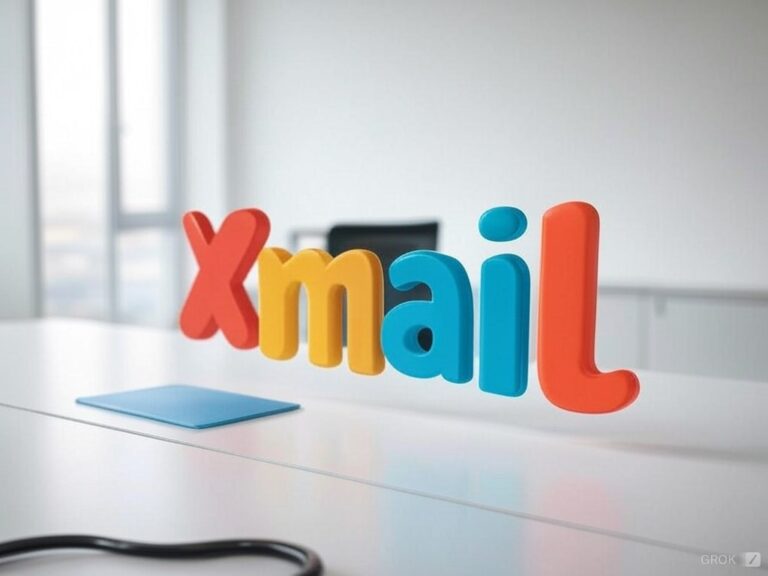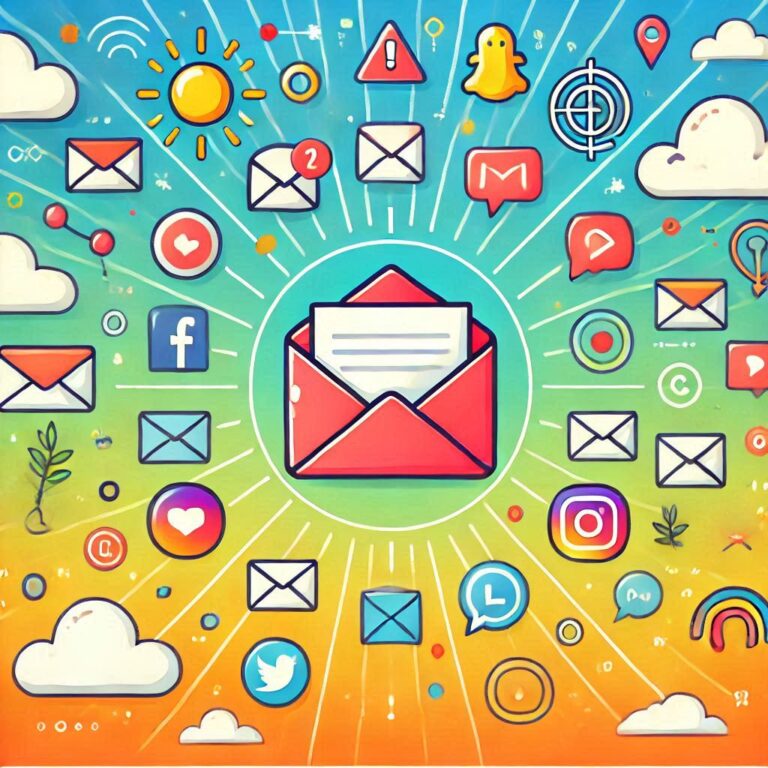Welcome to Xmail & Good Bye Gmail – Deeper Facts about Emails

Xmail: A New Contender in the Email Landscape
Elon Musk has recently hinted at launching Xmail, an email service poised to compete with established giants like Gmail and Outlook. While specific features of Xmail remain under wraps, it’s anticipated to integrate seamlessly within the X ecosystem, offering users the ability to send and receive emails without leaving the platform. This initiative aligns with Musk’s vision of transforming X into a comprehensive hub for communication, social networking, and financial transactions.
A Brief History of Email
The journey of email began in the early 1970s when Ray Tomlinson developed the first system capable of sending messages between users on different hosts across ARPANET, the precursor to the modern internet. This innovation laid the foundation for the global communication tool we rely on today.
Global Email Usage Statistics
Email remains a cornerstone of digital communication. In 2022, an estimated 333 billion emails were sent and received daily worldwide, with projections indicating this number could rise to 392.5 billion by 2026.
Gmail vs. Outlook: A Comparative Overview
Gmail and Outlook are two of the most prominent email services globally, each offering distinct features and commanding significant user bases.
-
-
User Base:
- Gmail: As of recent estimates, Gmail boasts approximately 1.8 billion users, capturing about 30.70% of the email market share in terms of email opens.
- Outlook: Outlook has around 400 million users, accounting for a smaller portion of the market share.
-
Market Share:
- Gmail: Holds a significant portion of the email client market share, second only to Apple’s Mail Privacy Protection.Demand Sage
- Outlook: Maintains a presence in the market but with a smaller share compared to Gmail.
-
Features:
- Gmail: Offers a clean interface, robust spam filtering, seamless integration with Google Workspace, and extensive customization options, including a variety of themes. Intradyn
- Outlook: Provides a more traditional interface with features like Focused Inbox, calendar integration, and compatibility with Microsoft Office applications.
-
Customization:
- Gmail: Allows users to personalize their inbox with various themes and layouts. Intradyn
- Outlook: Offers limited customization options compared to Gmail.
-

The Origins of Email (1960s–1970s)
Early Messaging Systems
- The concept of email began in the 1960s with messaging systems on time-sharing computers. Users could leave messages for others on the same machine.
- These systems were localized, meaning the messages stayed within a single computer.
The Birth of Modern Email
- In 1971, Ray Tomlinson, a computer engineer, revolutionized messaging by enabling messages to be sent between computers on the ARPANET (a precursor to the internet).
- Tomlinson introduced the use of the @ symbol to separate the username from the destination host—a standard still in use today.
Expansion and Commercialization (1980s–1990s)
Email Goes Mainstream
- By the 1980s, email was gaining traction in academic and corporate networks. The development of protocols like SMTP (Simple Mail Transfer Protocol) standardized email communication, making it easier for different systems to interact.
The Rise of Internet-Based Email
- With the rise of the internet in the 1990s, email shifted from being a corporate tool to a service available to the general public. Internet Service Providers (ISPs) like AOL and CompuServe began offering email services as part of their packages.
The Hotmail Revolution (1996)
Hotmail Launches
- In 1996, Hotmail (founded by Sabeer Bhatia and Jack Smith) became one of the first web-based email services. It allowed users to access their inbox from any computer with an internet connection, a revolutionary concept at the time.
- Its tagline, “Get your email anywhere,” highlighted this new level of convenience.
Microsoft’s Acquisition
- In 1997, Microsoft acquired Hotmail for an estimated $400 million and rebranded it as MSN Hotmail. This move marked the beginning of fierce competition in the webmail space.
Email Wars: Hotmail vs. Yahoo Mail (Late 1990s)
Yahoo Mail’s Entry
- Yahoo Mail launched in 1997, quickly becoming a major competitor to Hotmail. Its integration with Yahoo’s suite of services made it attractive to users.
Free Storage and Features
- Both Hotmail and Yahoo Mail offered free email accounts with limited storage, prompting millions of users to adopt web-based email.
- During this time, features like address books, spam filtering, and attachments became standard.
The Gmail Era (2004)
Game-Changing Features
- In 2004, Google launched Gmail, disrupting the email market. Its standout features included:
- 1 GB of free storage, far surpassing the competition.
- Threaded conversations to organize emails.
- Powerful search functionality, leveraging Google’s search expertise.
- In 2004, Google launched Gmail, disrupting the email market. Its standout features included:
Impact on Competitors
- Gmail’s innovations forced Hotmail, Yahoo Mail, and others to increase storage limits and improve user interfaces.
- By the mid-2000s, Gmail became synonymous with modern email.
Integration with Ecosystems (2010s)
Outlook.com
- In 2013, Microsoft rebranded Hotmail as Outlook.com, integrating it with the Microsoft Office ecosystem.
- Outlook offered features like calendar integration, cloud storage via OneDrive, and compatibility with Microsoft Office tools.
Email as a Hub for Productivity
- Services began emphasizing productivity, with features like automated sorting (Gmail’s “Primary,” “Social,” and “Promotions” tabs) and AI-powered suggestions (e.g., smart replies).
Email Today: Dominance and Scale
Global Usage
- Over 4.3 billion people use email worldwide (as of 2023).
- Approximately 333 billion emails are sent and received daily, reflecting its central role in both personal and professional communication.
Current Players
- Gmail leads the market with 1.8 billion active users.
- Outlook and Yahoo Mail remain popular but trail behind Gmail in terms of innovation and user base.
Challenges
- Despite its ubiquity, email faces challenges like spam (which accounts for nearly 50% of global email traffic), phishing, and competition from instant messaging platforms like Slack and WhatsApp.
Conclusion
From its humble beginnings in ARPANET to the revolutionary impact of Hotmail, Yahoo Mail, and Gmail, email has transformed the way humans communicate. While the introduction of services like Xmail aims to redefine email in the modern era, the foundational role of email as a communication tool remains unshaken. Its evolution underscores humanity’s relentless drive toward connectivity and innovation.
Online Paid Consultations
TRAINING | BUSINESS MENTORING | LIFE COACHING | PROJECT MENTORING | CONSULTATION
LIVE ONLINE IN PERSON COACHING
Chat / Call / Video Call
HOW DOES OUR ONLINE PAID CONSULTATION WORKS
YOU CAN CHOOSE CHAT / CALL / VIDEO CALL OPTIONS
1. CLICK ON THE LINK “CHECK YOUR BOOKING OPTIONS AND PRICING“.
2. YOU WILL BE REDIRECTD TO SECURE PAYPAL PAGE
3. CHOOSE AN OPTION FROM THE DROP DOWN MENU
4. CHOOSE NUMER OF SESSIONS (1 is selected by default)
5. MAKE SECURE PAYMENT VIA PAYPAL
6. DONE! WE WILL SEND IN YOUR MEETING DETAILS ON YOUR MAIL ID. YOU CAN CHOOSE A SLOT AND MEDIUM OF YOUR CHOICE.

Syed Saif the founder and CEO of Brainow Consulting. He has over 24 Years of experience in Quality, Excellence, Innovation, Six Sigma, Lean, and Customer Services. He is a Certified Master Black Belt, ISO Lead Auditor, High Impact Trainer, Certified Business Excellence Assessor, Certified on Innovation Business Model Canvas, and holds a PG diploma in Customer Relationship Management. Syed Saif has trained thousands of people, from students to CEOs on various improvement methodologies and self help techniques, and has worked in various industries including BPO, Telecom, IT, Insurance, Manufacturing, and Healthcare. Prior to his full-time consulting role, he served as Vice President for a Leading Insurance Company and as National Head of Quality, Innovation, and Service for Corporate and Sales Functions. See our services page for more details on what we do and how can we help you and your organization.
